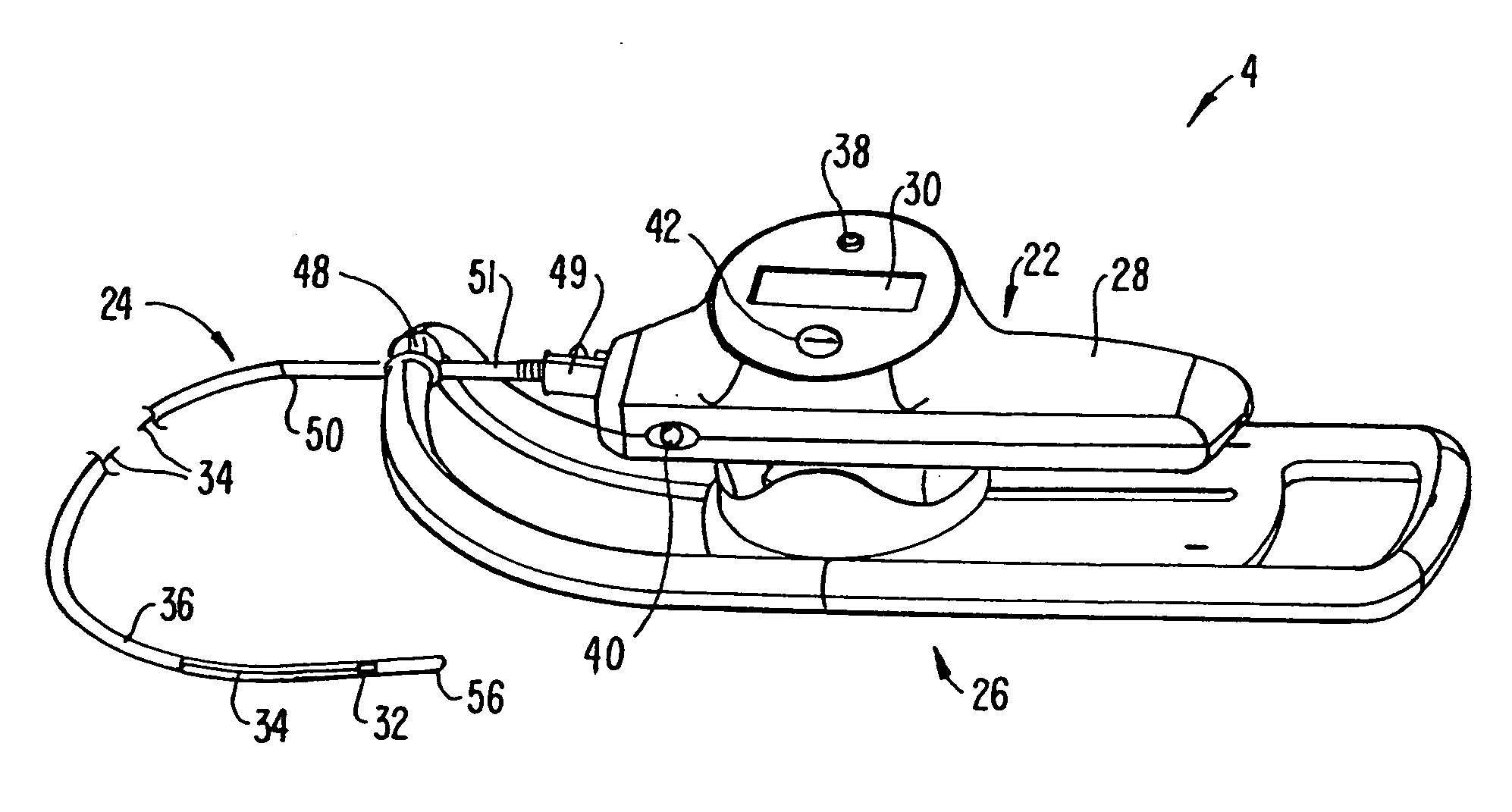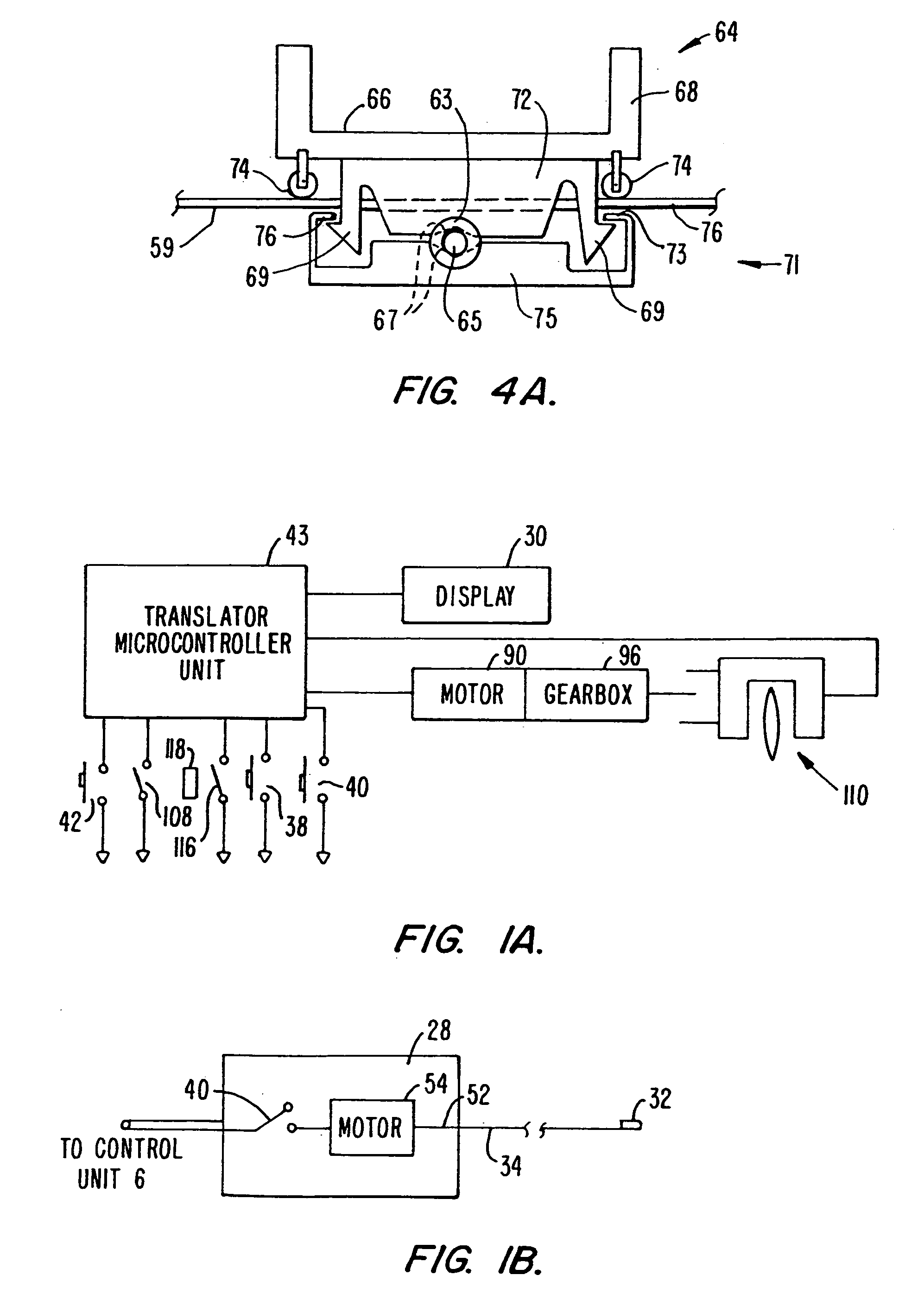Driveable catheter systems and methods
a technology of driving catheters and catheters, applied in the field of driving catheter systems, can solve the problems of limited blood flow, serious risk to the health of people, and constant translational rate of devices, and achieve the effect of simplified translational movement and user setup
- Summary
- Abstract
- Description
- Claims
- Application Information
AI Technical Summary
Benefits of technology
Problems solved by technology
Method used
Image
Examples
Embodiment Construction
[0027]FIG. 1 schematically illustrates a driveable catheter system 2 made according to the invention. System 2 includes broadly a driveable catheter assembly 4 operably coupled to a control unit 6 through a two-way data and communication link 8. One such two-way communication link includes an RS232 communication link which permits information and data from catheter assembly 4 to be directed to control unit 6 and permits instructions and control signals to be provided to driveable catheter assembly 4 from control unit 6.
[0028] Control unit 6 includes a display monitor 10 providing display of translation displacement information as well as other information. Control unit 6 also includes a control panel 12 which may include, for example, an alphanumeric keyboard, dedicated input buttons or a combination thereof. Other type of inputs including voice command input or a touch screen type of input can also be provided by control unit 6. In particular, control panel 12 provides for rotator...
PUM
 Login to View More
Login to View More Abstract
Description
Claims
Application Information
 Login to View More
Login to View More - R&D
- Intellectual Property
- Life Sciences
- Materials
- Tech Scout
- Unparalleled Data Quality
- Higher Quality Content
- 60% Fewer Hallucinations
Browse by: Latest US Patents, China's latest patents, Technical Efficacy Thesaurus, Application Domain, Technology Topic, Popular Technical Reports.
© 2025 PatSnap. All rights reserved.Legal|Privacy policy|Modern Slavery Act Transparency Statement|Sitemap|About US| Contact US: help@patsnap.com



